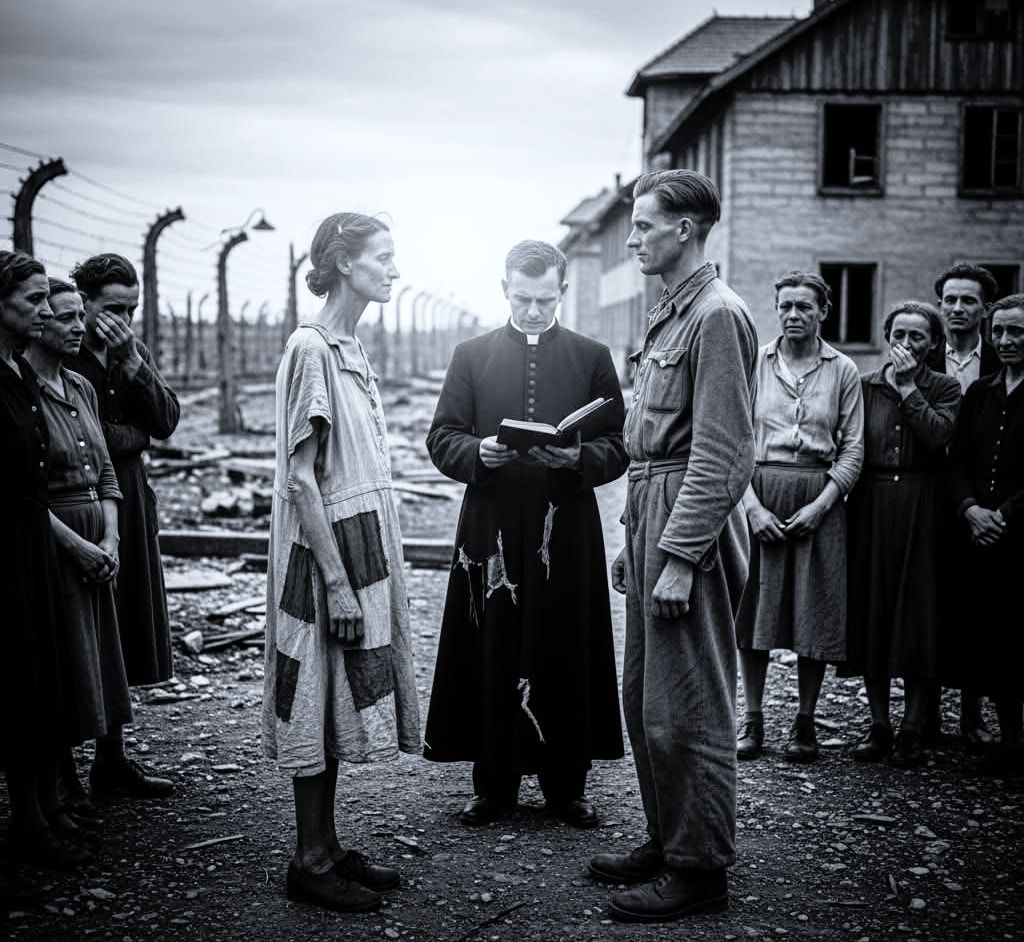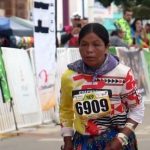The Vow of Defiance: Love Blooms in the Ashes of Bergen-Belsen

BERGEN-BELSEN, GERMANY, JULY 1945 – Just months after the Allied liberation exposed the horrors of the Bergen-Belsen concentration camp, an extraordinary act of human courage took place. Amidst the skeletal remains of the barracks and the silent grief of the survivors, a man and a woman stood side by side to declare a future where none seemed possible.

This was not a grand celebration; it was the first post-liberation wedding in the camp, a profound, quiet rebellion against despair.
The couple—Anya and Josef (names changed to honor their privacy and represent the countless others)—stood before a humble wooden barrack. They were frail and emaciated, their bodies bearing the indelible marks of starvation and brutality. Their attire consisted of borrowed, ill-fitting clothes salvaged from relief supplies. For rings, they had only simple loops twisted from spare utility wire, yet their vows were perhaps the most profoundly real ever exchanged.
The Ceremony of Resurrection

A chaplain, equally weary from the chaos of recent months, whispered the blessings. The audience consisted solely of fellow survivors, spectral figures gathered closely, bound by shared trauma and a desperate need for hope.
There were no flowers, no celebratory music, and certainly no feast. Yet, the ceremony shone with a brilliance that surpassed any grand cathedral wedding, for it declared something miraculous: that even in a place built specifically to erase love and annihilate humanity, love had still found a way to persist.
Every vow uttered was an act of defiance. The simple promise to “love and cherish” was a quiet political statement against a regime that sought to dehumanize them. It was a declaration that the future would belong to life, not death.
The Truest Form of Freedom

As Anya and Josef exchanged their makeshift rings, the onlookers wept. Their tears were a complicated mix—the deep, lingering grief for those who had perished, mingled seamlessly with a powerful, surging hope for the living. This wedding was a visible, undeniable sign that life was going to bloom again.
In the faces of the newly wedded couple, the survivors saw tangible proof that joy could rise from the ashes. It signaled the end of isolation and the beginning of a community reborn. The ceremony underscored a powerful truth: that true human resilience is measured not by how much one endures, but by the will to create beauty, connection, and promise after the suffering has ended.
Lina and Pavel’s quiet commitment echoed a shared resolution: “We will love again. We will build again. We will live.” Their marriage, born from the deepest tragedy, remains an eternal symbol that love is, indeed, the truest form of freedom.











